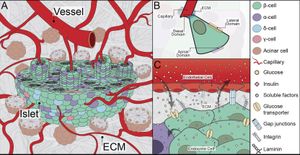HIV/AIDS continues to pose significant global health challenges, with millions of lives affected by the virus. With no cure yet available, effective modeling of disease dynamics becomes increasingly important for controlling its spread. A recent study published by A.H. Morani, M.M. Saeed, M.A. Usman, and M.A. Salman takes significant strides toward enhancing our mathematical modeling of HIV transmission dynamics through the introduction of the Nonstandard Finite Difference (NSFD) scheme.
Current methods of modeling HIV transmission have limited accuracy, making it difficult to simulate the spread of the virus effectively. Traditional mathematical approaches, such as the Runge-Kutta method (RK-4), often fail to capture the complexity of HIV dynamics. The NSFD scheme, on the other hand, not only improves dynamical consistency but also offers enhanced numerical precision.
The study's mathematical framework accounts for both symptomatic and asymptomatic individuals, thereby providing a more comprehensive perspective on the epidemic. This is particularly relevant as HIV infection progresses through distinct stages: primary, asymptomatic, symptomatic, and finally, AIDS. Each stage requires different management strategies, and the study seeks to integrate these variations within its modeling approach.
The core objective of the research was to analyze the local and global stability of HIV/AIDS dynamics. The researchers calculated the basic reproduction number (R0), which serves as a pivotal threshold indicator of disease transmission potential. An R0 less than one suggests the disease will eventually decrease and potentially disappear, whereas values greater than one signal persistence of the infection within the population.
Utilizing the Routh-Hurwitz method, the authors performed stability analyses, providing insights on the conditions necessary for controlling the spread of HIV. The analysis revealed the NSFD method's superior ability to maintain the stability of predicted disease dynamics over extended periods, which is invaluable for developing effective treatment and intervention strategies.
Among the significant findings highlighted is the NSFD scheme's capability to effectively simulate HIV transmission under various scenarios, paving the way for more informed public health strategies. Morani and colleagues affirmed, "The NSFD method effectively captures the dynamics of HIV propagation under various scenarios, providing valuable insights for future research." This helps establish the model's reliability for making predictions and evaluating potential interventions.
The researchers acknowledged the need for integrated approaches to managing both HIV and associated co-infections, such as Tuberculosis (TB), which disproportionately affect HIV-positive individuals. The interrelationship between HIV and TB creates additional challenges for global health, underscoring the necessity of models like the one presented here.
Moving forward, the authors plan to refine their model by comparing dynamic consistency with existing sensitivity analyses. They also aim to explore NSFD’s applicability to other epidemic models, enhancing our overall comprehension of infectious disease dynamics. A prominent quote from the article encapsulates their ambitious future outlook: "By employing sensitivity analysis alongside NSFD, we aim to identify key parameters influencing disease transmission."
Overall, the study is positioned as both timely and significant, offering fresh perspectives on HIV/AIDS dynamics and highlighting the potential of innovative methodologies. The authors summarize their collective hope, stating, "This study’s dedication to scientific inquiry serves as inspiration to combat HIV/AIDS." Such optimism fosters continued efforts toward achieving breakthroughs not only for HIV but also for other infectious diseases globally.



